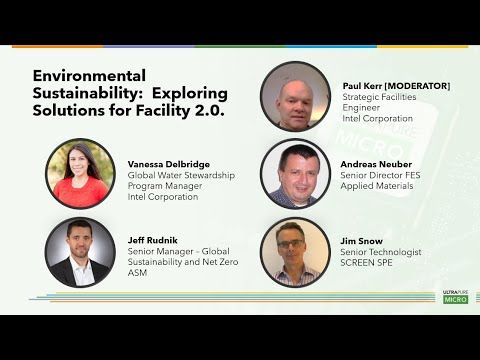Non-obvious Barriers to Innovation in Environmental Sustainability
Share this insight
Slava Libman – CEO at FTD solution INC
Gregory A. Norris – Director of SHINE (the Sustainability and Health Initiative for NetPositive Enterprise) at MIT
Understanding Net Positivity
Net positivity is more than a buzzword; it represents the gold standard for corporate environmental responsibility. This concept involves reducing our negative impact (footprint) and enhancing our positive contributions (handprint) to the environment. However, striking this balance is challenging. A balancing act is needed to rationalize investments and optimize operations. The smaller the footprint, the fewer corrective measures are required to achieve net positivity. Beyond resource management, it's vital to consider other critical factors that are difficult to rectify.
A recent study utilized a computer model to assess the effects of various factors on pole shift. The analysis indicates that the Earth's axis moves 1.7 inches annually due to groundwater removal. Groundwater pumping was the second-largest contributor to axis drift, with the melting Greenland ice sheet as the primary factor [1].
While many argue that hefty investments lead to net positivity, the reality is intricate. With centuries of industrialization adversely affecting our environment, our efforts to reverse these effects have only begun recently [2]. The rush for environmental sustainability has prompted corporations to set ambitious goals. However, formulating best practices to realize these goals often takes longer than anticipated. Current efforts frequently lack the solid foundation of established standards.
Veolia's recent study underscores this challenge. Surveying 245 large manufacturing firms across various industries, the study reveals that only half of these businesses have defined sustainability objectives. Furthermore, over half of the firms with set goals lack specific projects to fulfill them [3]. This discrepancy could stem from the lack of a unified strategy, exacerbated by inconsistent data across departments. Without standardized data management, decisions often miss the necessary clarity and accuracy for meaningful action.
Innovating the Path Forward
Innovation, by its very nature, involves renewing and updating domains, products, or services by implementing new processes, techniques, or ideas. In this context, the focus is on the environmental sustainability of industrial facilities.
The current innovation landscape boasts numerous available factors that can promote achievement of solutions:
- Executive commitments from most industrial enterprises.
- Allocated and available financial resources.
- Internal and external experts ready to facilitate the adoption of innovative solutions.
- A plethora of technologies for water treatment, energy conservation, monitoring, and control. Although there's always room for refinement, our current toolkit is robust enough to enable necessary change.
Despite these assets, why does a considerable innovation gap remain? Achieving solutions requires more than the available success factors listed above. Introducing new standards and processes demands a shift in organizational mentality as well.
Bridging the Organizational Gap
For innovation in environmental sustainability to thrive, isolated endeavors are insufficient. Comprehensive organizational alignment is pivotal. With 25 years of experience in environmental sustainability, encompassing all significant aspects of industrial facility management, the predominant challenge is not tool scarcity but the absence of cohesive, company-wide strategies. This alignment begins by fostering a sustainability-centric mindset, encouraging collaborative, data-driven decisions. These decisions, grounded in a holistic approach considering lifecycle assessments, can utilize company commitments, resources, and solutions.
Graziano's research on "Ignite Culture" sheds light on this subject. Highlighting the importance of a "Growth Mindset," she emphasizes the necessity for organizations to be adaptable, receptive to innovation, and resilient against challenges [4]. McKinsey's report indicates that companies embracing a robust Growth Mindset are more inclined to prioritize sustainability, seeing it as an opportunity, not an obligation [5].
Creating this mindset demands an enabling environment. Organizations should emphasize safety, champion innovation, and clearly communicate their vision [6]. Equally vital are the structured processes and systems that guide these endeavors, ensuring alignment with overarching objectives.
Harnessing Data Catalyzes Transformation
In today's digital era, data stands as the cornerstone of informed decision-making. The Water Management Application software, FTD’s WMA, showcases the potential of structured data. By digitally replicating industrial facilities, it offers crucial insights to shape water management strategies.
Its utility goes beyond strategy development. Structured data fosters collaborative decision-making, breaking down decision-making silos. The World Economic Forum underscores the value of data in achieving sustainable development goals, spotlighting its role in shaping policies, pooling resources, and evaluating impacts [7].
Data-driven insights are also pivotal communication tools. They facilitate transparent interactions with stakeholders, ranging from suppliers to consumers. This openness not only fosters trust but also promotes cooperative solutions, embedding sustainability in every facet of organizational procedures.
The Transformative Power of Collaboration
The significance of collaboration in the sustainability journey is paramount. To realize net positive outcomes, industry-wide synergies are essential. Harvard Business Review notes that the most pressing sustainability challenges—from climate change to resource exhaustion—exceed organizational limits, necessitating collective efforts [8].
Stakeholder engagement, fundamental to this collaborative method, provides diverse viewpoints. These insights can direct innovative solutions.
Tackling Regulatory Changes
Impending ESG (Environmental, Social, and Governance) regulations emphasize sustainability's importance, urging businesses to be transparent regarding their environmental footprint. While these guidelines pose challenges, they're crucial in establishing a benchmark for corporate responsibility [8]. Compliance shouldn't be the only motivation. Visionary enterprises perceive these regulations as opportunities since they directly influence site longevity. Thus, upcoming ESG regulations can catalyze exceptional changes.
Integrating Sustainability into Corporate DNA
Further research from the MIT Sloan Management Review indicates that firms incorporating sustainability into their core strategies outshine those treating it as a peripheral effort [9]. These integrated methodologies not only bring environmental benefits but also boost brand reputation, stakeholder confidence, and long-term fiscal performance.
Digitalization: The Uncharted Path to Sustainability
Digital technologies hold immense potential in advancing sustainability objectives. The dawn of the Fourth Industrial Revolution has spotlighted technologies like AI, IoT, and advanced analytics, which can be harnessed for sustainability projects [10].
Conclusion: A Call to Action
In the pursuit of environmental sustainability, challenges like organizational misalignment, fragmented data, and the absence of a unified growth mindset are evident. Yet, viewing these barriers as opportunities rather than setbacks is essential.
An integrated, data-driven, and collaborative approach is key. With sustainability integrated into corporate DNA, powered by digital advancements, the global community can indeed create a net positive future.
References
- Clark, P. U. et al. (2021). "Role of groundwater depletion in shifting Earth's axis." Nature Geoscience, 14(6), 367-371.
- Jackson, R. (2018). "Industrial impacts on global environmental degradation." Global Environmental Change, 52, 78-92.
- Veolia (2023). "Global Sustainability Report." Veolia Group.
- Graziano, L. (2022). "Ignite Culture: Fostering a Growth Mindset." Business Innovations Journal, 10(3), 15-27.
- McKinsey & Company (2023). "The Sustainability Mindset Report." McKinsey Global Institute.
- Edmondson, A (2018). “The Fearless Organization: Creating Psychological Safety in the Workplace for Learning, Innovation, and Growth.” Wiley.
- World Economic Forum (2022). "Harnessing Data for Sustainable Development." World Economic Forum Publications.
- Harvard Business Review (2021). "Sustainability as a Collaborative Goal." HBR Press.
- ESG Standards Board (2022). "Corporate ESG Reporting Guidelines." ESG Publications.
- MIT Sloan Management Review (2021). "The Strategic Imperative of Sustainability." MIT Press.
- World Economic Forum (2022). "Fourth Industrial Revolution and Environmental Sustainability." World Economic Forum Publications.





